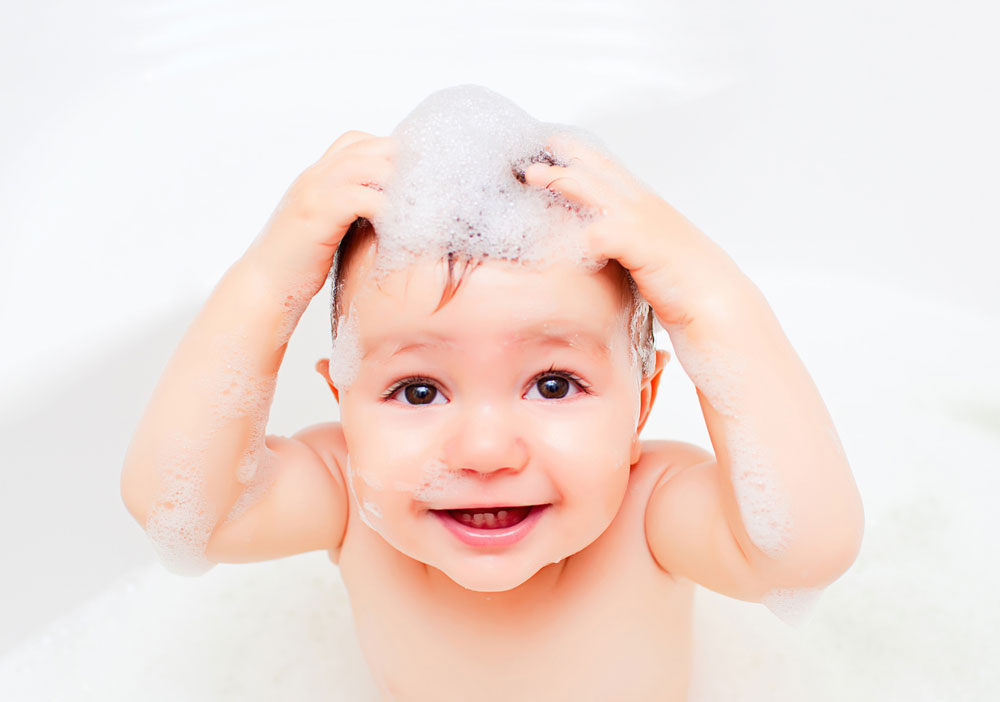Strange Reason for Baby's Positive Pot Test Found

Certain soaps used to wash babies shortly after birth may cause the baby to test positive for marijuana on some newborn screening tests, a new study suggests.
In the study, urine samples that contained minute amounts of any of five baby soaps — Johnson & Johnson's Head-to-Toe Baby Wash, J&J Bedtime Bath, CVS Night-Time Baby Bath, Aveeno Soothing Relief Creamy Wash and Aveeno Wash Shampoo — gave a positive result on a drug screening test for tetrahydrocannabinol (THC), the active ingredient in marijuana.
The researchers began their investigation after nurses at a North Carolina hospital reported an increase in the number of newborns testing positive for marijuana.
The amount of soap in the urine needed to produce a positive test result was tiny, less than 0.1 milliliters, the researchers said.
It's important to note the soaps do not produce a "high," or any other effects of marijuana, in infants. "It's not marijuana a in any way, shape or form," said study researcher Catherine Hammett-Stabler, a professor of pathology and laboratory medicine at the Universtiy of North Carolina, Chapel Hill.
A screening test that indicates a baby has been exposed to marijuana can lead to the involvement of social services, and accusations of child abuse, the researchers said.
Given these consequences, it's important for health-care providers and laboratory staffs to be aware that these soaps may lead to a positive test for marijuana, and to consider confirming positive tests with a more sensitive method, the researchers said.
Sign up for the Live Science daily newsletter now
Get the world’s most fascinating discoveries delivered straight to your inbox.
"We really did this to help protect families from being falsely accused" of drug use, and to help ensure that intervention efforts are directed to babies who are truly at risk of drug exposure, said study researcher Dr. Carl Seashore, a pediatrician in the newborn nursery at UNC Chapel Hill.
Drug screening tests in hospitals that come back positive are not usually sent out to laboratories for additional conformation, because of the time and cost involved, Hammett-Stabler said.
Newborn screening for exposure to marijuana is common, and is especially recommended for babies born to women considered to be "high risk" for drug use, such as those who do not come in for prenatal care visits, Hammett-Stabler said. At UNC Chapel Hill, 10 to 40 percent of babies born in the hospital receive the test each month, Seashore said.
Why the result?
The researchers aren't sure why the baby soaps cause the marijuana screening test to come back positive. It could be that some of the compounds in the soap have a structure that is partly similar to THC, or it could be that chemicals in the soap change the way the test works, Hammett-Stabler said.
The test is likely showing a positive result because some residual soap on the skin is washing off into the baby's urine sample, Hammett-Stabler said.
When a more sensitive test was used on the urine samples containing the soap, the test came back negative, she said.
Piece of the puzzle
One positive test for marijuana exposure would not likely be enough to get social services involved with the parents, Seashore said.
"It would only be one piece of the puzzle," Seashore said.
Other factors would be taken into account, such as a history of substance abuse or lack of prenatal care, Seashore said.
The UNC Chapel Hill now sends all positive newborn drug urine tests for conformation before any action is taken.
The study, published in the June issue of the journal Clinical Biochemistry, also highlights the importance of collaboration and communication between different units of a hospital, the researchers said.
Pass it on: Certain baby soaps can trigger false positive tests for exposure to marijuana in newborns.
Follow Rachael Rettner on Twitter @RachaelRettner,or MyHealthNewsDaily @MyHealth_MHND. We're also on Facebook & Google+.

Rachael is a Live Science contributor, and was a former channel editor and senior writer for Live Science between 2010 and 2022. She has a master's degree in journalism from New York University's Science, Health and Environmental Reporting Program. She also holds a B.S. in molecular biology and an M.S. in biology from the University of California, San Diego. Her work has appeared in Scienceline, The Washington Post and Scientific American.









